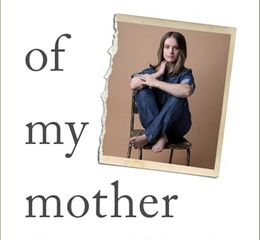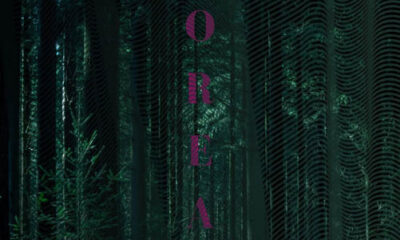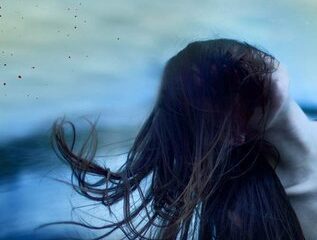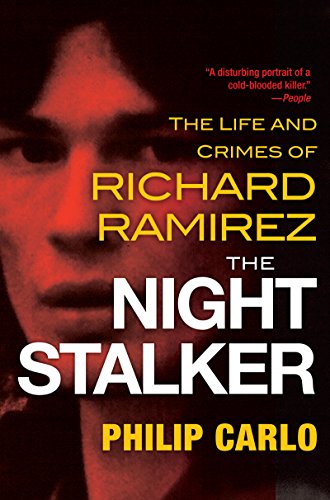
True Crime Studies: Philip Carlo’s ‘The Night Stalker’ is graphic nightmare fuel
Someone once asked Richard Ramirez how to avoid being targeted by a serial killer. His answer: “You can’t. Once they are focused on you, have you where you are vulnerable, you’re all theirs (…) When you drop your guard — that’s when the serial killer moves.” He would know after all, he did kill an estimated 14 people and stalked an entire city for over a year, throwing the state of California into total chaos.
He was the embodiment of Wrath, as if his body had been emptied of blood and organs and replaced with boiling steam. His very existance had people convinced that the Devil was living among them, including Ramirez himself who claimed to not only be a Satanist, but a devoted servant of Lucifer with big dreams of spending eternity by his overlord’s side.
What I’m saying is, he was a delusional, twisted sexual deviant that scared the crap out of a lot of people. He also had an embarrassingly large number of groupies but we’ll get to that in a minute.
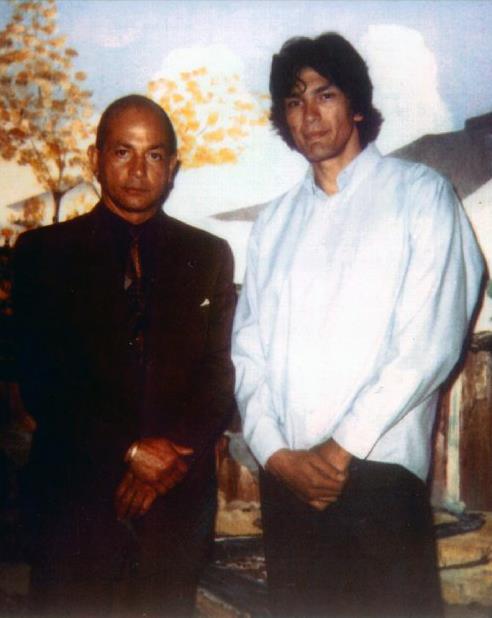
Richard Ramirez, also known as “The Night Stalker,” was a serial killer, robber, and rapist that terrorized the residents of Los Angeles and parts of San Francisco from June 1984 until August 1985.
There have been many books written on Ramirez but, The Night Stalker: The Life and Crimes of Richard Ramirez by Philip Carlo is one of the best true crime biographies I’ve ever had the pleasure of reading. It’s right up there with Dave Cullen’s Columbine for me. Carlo holds nothing back. He describes everything and I mean EVERYTHING. From the violently invasive descriptions of sexual assault to the silly arguments that went down in the courtroom, nothing is left unsaid. The crime scenes are particularly graphic in detail, not much is left for the imagination. You’ll be able to smell the blood, feel the fear, and see the dark sky standing over Ramirez as he approaches his next target. It’s like an awful car wreck, can’t look away no matter how disturbing it is.

The book is split up into five parts (The Hunters and the Hunted, Richie, Capture, The Trial, and Epilogue) with Part One taking place during the bulk of the crime spree leading up to the end of the investigation. The narrative is shared between Ramirez and the police detectives chasing him, Frank Salerno and Gil Carrillo, with each of their individual points of view evenly distributed throughout. An interesting detail about Part One is that Ramirez is never mentioned by name. He is referred to only as “the killer” until the police actually identify him. This withholding of identification is both a narrative technique and also a way to dehumanize him, portray him as more of a force than an actual man.
It makes the book very psychological. Inserting you within the investigation so that you feel like you’re working alongside Salerno and Carrillo as they track the killer’s movements.
The Ramirez family
A Horror Story All its Own
Once we’ve removed the mask, we learn how the monster was made, only it’s a tragedy. The beginnings of the Night Stalker and the entire Ramirez family is a great big tragedy.
“My brother never slept. He was always up and moving around at night.”
Ruth Ramirez
Carlo goes all the way back to Richard’s grandparents, tracing the line of violent temperament through the Ramirez bloodline. His father, Julian, was regularly abused by his own father and grandfather, becoming permanently solemn and resentful by his teenage years. He would spend the rest of his life fighting this resentment.

He meets and marries a woman named Mercedes, and together they have a total of five children. All but one would be born with behavioral issues, learning disabilities, or physical defects. Their first four children, Ruben, Joseph, Robert, and Ruth were conceived and born while the family was living near a nuclear testing site in Los Alamos. An area where many children were born with birth defects and behavioral issues.
By the time Mercedes was pregnant with Richard, the family had moved to El Paso where she had taken a job at the Tony Lama boot factory. There she worked with toxic chemicals to improve pigmentation in shoe coloring, toxins that were later linked to severe birth defects. It is widely believed that Richard, who suffered from epilepsy, was harmfully affected by these chemicals while in the womb. His epilepsy would ultimately cause damage to his temporal lobe, the part of the brain largely responsible for handling emotion. Damage to the temporal lobe has been known to cause hypersexuality, sexual aggression, and just aggression in general. He would later be diagnosed with a schizoid personality disorder.
Richard’s fate, however, was only sealed once he started hanging out with his older cousin Miguel.
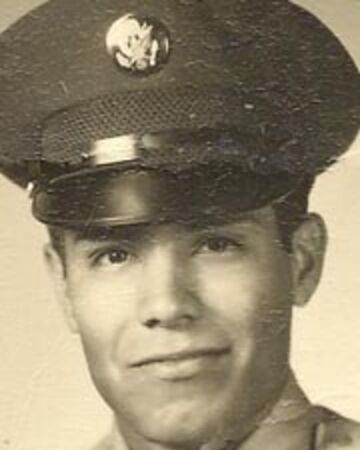
Miguel was a Vietnam veteran who was a twisted, savage human being. Having killed and raped many people overseas, he would often brag about his many conquests, actually showing Richard pictures of the women he sexually assaulted and then murdered. The pictures were often taken mid-act so they were basically torture porn snuff images. Their get-togethers were cut short when Miguel murdered his wife Jessie right in front of little Richard.
Many who’ve studied Ramirez put a lot of the blame onto Miguel who they believe twisted the young man’s already troubled mind. Psychiatrist Michael H. Stone described Ramirez as a ‘made’ psychopath rather than a ‘born’ psychopath and Miguel likely had something to do with that.
“That day I went back to the apartment, it was like some kind of mystical experience. It was all quiet and still in there. You could smell the dried blood. Particles of dust just seemed to hover in the air. I looked at the place where Jessie had fallen and died, and I got this kind of tingly feeling. It was the strangest thing. Then my father told me to look in her pocketbook for this jewelry my cousin wanted, and I dumped Jessie’s pocketbook on the bed and looked through her things. It gave me the weirdest feeling — I mean, I knew her, and these were her things and she was dead. Murdered. Gone. And I was touching her things. It made me feel…in contact with her.”
Richard Ramirez, The Night Stalker
Trial for the ages
The next big chunk of the book is the trial but I hate reading about court cases so this part was a bit of a bore for me. Carlo still manages to make it interesting though. The whole thing was crazier than an ill-planned circus act. It covers everything from start to finish so that you come away with a full picture of what happened, that if anything, highlights how the judicial system is just as messy, boringly chaotic, and confusing as a busy call center. It’s not just the trial though. Part Four also deals with public perception and the Ramirez groupies that were crowding around the jailhouse on a daily basis.
*Charlie Kelly voice* Now let’s talk about the groupies. Can we talk about the groupies, please, I’ve been dying to talk about the groupies with you all day!
Groupies
I understand this is a type of disorder but…what the f*** ladies? There were so many women drooling over Ramirez after he was captured that I actually felt ashamed of my gender for a moment.
Hybristophilia is considered a type of sexual disorder that several people, mostly women, experience but in the case of Ramirez, it was a bit more extreme, not to mention embarrassing. Hybristophilia is usually brought on when a woman encounters a violent man and thinks she can “tame” him with her love. These individuals will often find excuses for their partner’s crimes while simultaneously think that they’re special. They enjoy the thought of knowing, or thinking, that their partner has harmed others but will never hurt them.
Carlo spends a lot of time with Ramirez’s female admirers and, even though these women are clearly troubled, they make such fools of themselves that you’ll just want to b***h slap them, in particular Doreen Lioy and Cindy Haden. They weep and shamelessly salivate over him, all the while admitting that his crimes make them feel uneasy. A lot of these women seemed to believe the misconception that psychopaths are ugly. The shock of Ramirez being attractive was what lured most of them in. None of them would’ve been tearing down Henry Lee Lucas’s door. It’s one of the most infuriating and fascinating sections of this book.
Final Verdict
The Night Stalker doesn’t play the pity card. Carlo isn’t interested in making you feel bad for Ramirez, he just wants to explain how this monster was created, which is what makes the book such a captivating read. It is dark, technical, psychological, and extremely thorough. Carlo evolved the true-crime novel that originated with Truman Capote’s In Cold Blood. It will make you check your windows and doors more than once during the night.
 (4.5 / 5)
(4.5 / 5)
Book Reviews
A Stellar Debut Novel, We Used To Live Here
Imagine this. You’re home alone, waiting for your partner to return, when you hear a knock on your door. You answer it to see a family of five, bundled up against the cold. The father, a kindly older gentleman, explains that he used to live in this house as a boy. And he would love to show it to his family.
Do not let them in.
The story
Released in June 2024, We Used To Live Here is author Marcus Kliewer’s debut novel. It tells the story of Eve, who just purchased a beautiful house with her partner, Charlie. Their plan is to flip the house and sell it.
One night, while waiting for Charlie to come home, Eve is surprised by a knock at the door. It’s a man named Thomas Faust and his family.
Thomas explains that he grew up in the house and hasn’t been in the area in years. Would Eve let them in so that he can show the home to his children?
Against her better judgment, Eve lets them in. She regrets this almost at once when Thomas’s daughter vanishes somewhere into the house.
What worked
I always appreciate a book that allows you to play along with the mystery. And this book does that better than just about any other I’ve seen.
Pay close attention to the chapters, to the words that aren’t there. To everything about this novel.
This is mostly down to Kliewer. This is ultimately his work of art. But the production value is also fantastic. I don’t want to ruin the multiple mysteries, so I’ll just say this. There are clues in this book that require some specific artistic choices in the page layouts in this book. And I loved that.
If you’d like to experience another horror book review, check out this one.
We Used To Live Here is also the kind of story that makes you question everything right along with the main character, Eve. Eve is a great main character. But she might be an unreliable narrator. She might be experiencing every single horror described, exactly as it’s described. Or, she might be having a psychotic breakdown. Through most of the book, we can’t be sure. And that is so much fun.
Finally, the weather plays a large part in this story. There are several stories in which the weather or the land itself could be considered a character. Even an antagonist. This is certainly one. The winter storm is the thing that traps the family in the house with Eve. It also makes escaping the home difficult. Reading this book during the winter was especially impactful. Most of us know what it feels like to be shut in by a storm. I’ve personally lived through some of those storms that are just referred to by their year, as though they were impactful enough to claim the whole 365 days for themself. And that was with people I liked. Imagine what it would feel like with strangers. It’s a staggering thought and one that we explore in depth in this book.
In the end, We Used To Live Here is a fantastic book. It’s the sort of story that sneaks into your brain and puts down roots. And if this is just the first book we’re getting from Kliewer, I can’t wait to see what else he comes up with.
 (5 / 5)
(5 / 5)
Book Reviews
Exploring real terror with The House of My Mother
As a disclaimer, this is a review of The House of My Mother from a critical perspective. I will not be discussing my opinions of the legal case against Ruby Franke and Jody Hildebrandt. I will be discussing the merits of the book as a work of true crime alone.
In 2015, Ruby Franke started a YouTube channel called 8 Passengers. In August of 2023, Franke and her business associate Jodi Hildebrandt were arrested for, and later plead guilty to, charges of aggravated child abuse. And in January of this year, Shari Franke told her story in The House of My Mother.
The story
The House of My Mother is the true story of Shari Franke, the oldest child of one of the most famous family vlogger families.
As a child, Shari came to the conclusion that her mother didn’t like her. Soon, she began to fear her mother’s anger.
Things got significantly worse when Ruby started their family vlog. All of the families most intimate moments were splashed across the internet for anyone to watch. This became a living nightmare for Shari.
Of course, that was only the start of the family nightmare. Because Ruby was about to meet someone who would reinforce all of the darkest parts of herself.
Eventually Shari manages to escape her home. But her younger siblings were still in her mother’s clutches. She had to save them, and her father, from the monster her mother had become.
What worked
Through the book, Shari only ever mentions the name of one of her siblings, Chad. This is because Chad is the only of her siblings that is an adult at the time of the publication.
There are children involved in this story. Children who’s lives and privacy have already been damaged. Shari didn’t want to do that to them again, and neither do I.
It probably won’t surprise you that this book is full of upsetting details. But not in the way you might imagine.
Nowhere in this book will you find gory details about the abuse the Franke kids suffered. And I consider that a good thing. Those sort of details are all fun and games when we’re talking fiction. When it’s real kids who are really living with the damage, it’s not a good time.
What you’ll find instead is a slew of more emotionally devastating moments. One that stuck with me is when Ruby’s mother gives her a pair of silk pajamas as a gift after Ruby gave birth to one of her babies. Shari asks Ruby if she’d bring her silk pajamas when she had a baby. Ruby responds that yes, when Shari becomes a mother they can be friends.
What a lovely way to make a little girl feel like she’s not worth anything unless she reproduces. And, if she does decide to have children, who is going to bring her silk pajamas?
In the end, this isn’t a story about ghosts or demons. It’s not about a serial killer waiting on a playground or in the attic of an unsuspecting family. Instead, this is a story about things that really keep us up at night. It’s the story of a woman so obsessed with perfection that she drove away her eldest daughter. The story of a young woman who’s forced to watch from afar as her beloved brothers and sisters are terrorized and abandoned. These are the sorts of things that really keep us up at night. These are the real nightmares.
More than that, though, The House of My Mother is a story of survival. It’s about a family that was ripped apart and somehow managed to stitch itself back together again. It’s about a brave young woman who managed to keep herself safe and sane in the face of a nightmare. If you haven’t read it yet, I can’t recommend it enough.
For more like this, check out my review of Shiny Happy People.
 (5 / 5)
(5 / 5)
Book Reviews
Book Review of Boreal: an Anthology of Taiga Horror
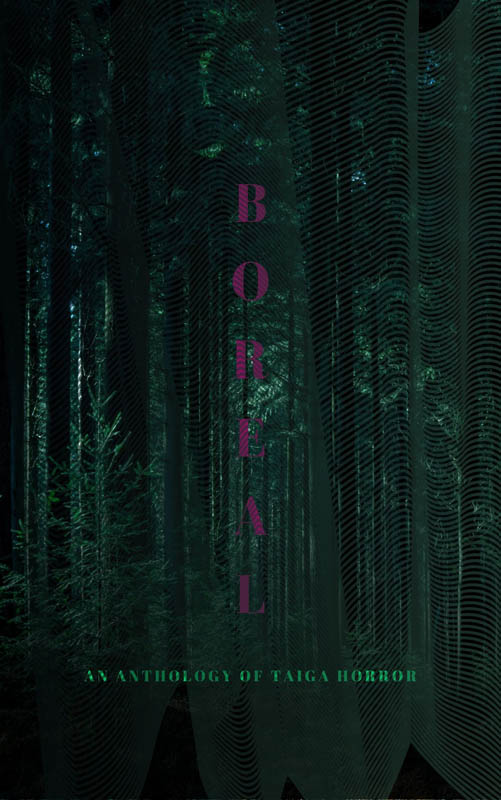
Boreal: an Anthology of Taiga Horror is a collection of twenty-two haunting tales that dwell in the deepest darkest woods and frozen wastelands, edited by Katherine Silva and including Haunted MTL’s very own Daphne Fauber. Each story has even been gifted with its very own poster, hinting at the horrors to be found within it, bestowing a beautiful visual collection as well.
The tales are varied and touch upon the environment in new and different ways, each hearkening to a sort of epiphany or raised awareness. These stories exude both dread and wonder at the smallness of our human existence in contrast to the sacred world we have isolated from, sheltering ourselves in our comfortable houses with centralized heat and everything we could possibly need or want at the ready. The taiga becomes a sanctuary outside of our own dulled awarenesses. It is a holy place imbued with powers beyond mortal human reach, a wilderness that threatens to swallow us – both whole and bit by bit, simultaneously.
The protagonists enter into this realm through ritual, superstition, longing, stubbornness, and their own hubris – yearning to survive its dangers, and to make their own marks upon it. The starkness of their surroundings harbors delicate moments that would be all too easily missed if not deliberately sought or pointed out. The softness of fur, the dappled sunlight shining through trees, the hazy clouds of breath forming in crisp air, the brittleness of bleached bone… those quiet experiences that beg to be forgotten, to lay safely sleeping just below the frozen surface, awaiting spring.
There are those who followed in the footsteps of their predecessors, seeking to escape the constraints of their parent’s and elders’ indoctrination, traditions, madness, and abuse, yearning to find their own way despite also being inextricably bound to their own pasts. There are those who just wanted to go for a walk in the woods, and remained forever changed by what they experienced. There are those who wished to impose their will upon the wilderness, their order falling to disarray, unable to make lasting impact. There are those who sought to leave behind the world of mankind, looking for oneness in the natural order of things through isolation, leaving a bit of themselves behind after being consumed by the terrors they encountered. There are those who truly found communion with the woods, became one with its wildness, and invited its spirit into their hearts to find peace, even at cost of their own lives. And then, there are the spirits themselves…
 (3 / 5)
(3 / 5)
All in all, I give Boreal: an Anthology of Taiga Horror 3.0 Cthulhus. I love existential angst so I found it to be an enjoyable read, and I appreciated the myriad manners in which the biome was explored. But there were points in which I found myself struggling to follow along, as if the words were swept up into their own wilds in ways that alienated myself as reader, as if my mere voyeurism into this otherworldly place was not enough to comprehend the subtle deviations in storytelling mannerisms fully. I suppose in some sense this seems appropriate, but at the same time, it left me feeling a bit unfulfilled, as if I had missed a spiritual connection that should have resonated more deeply.


